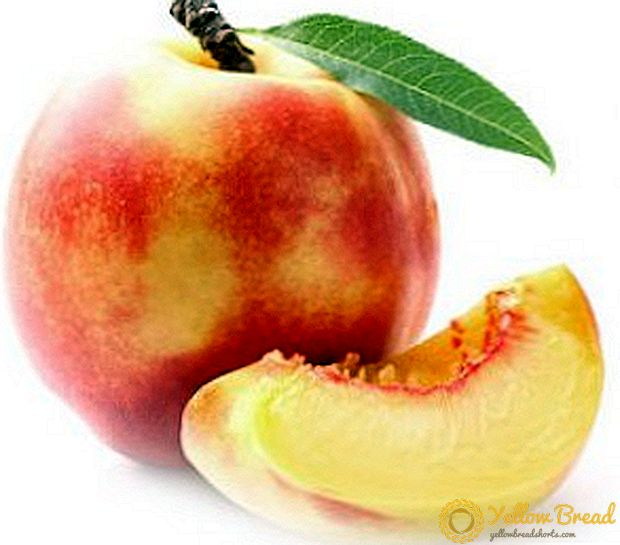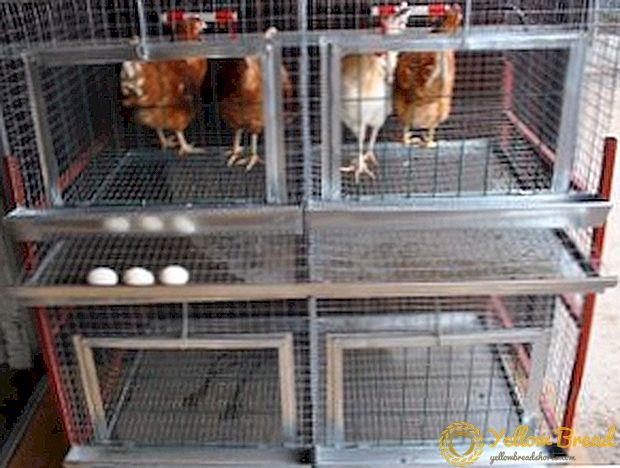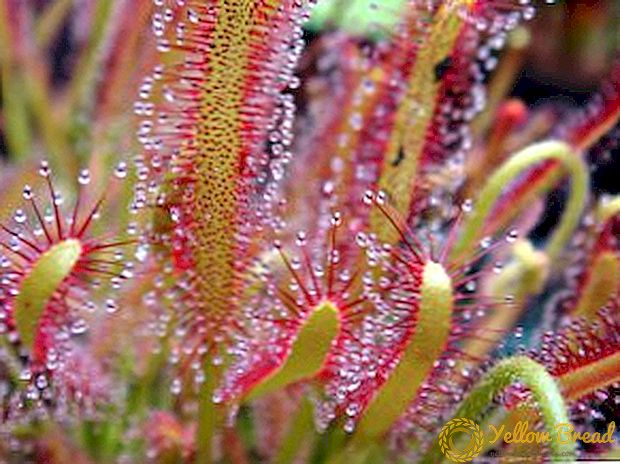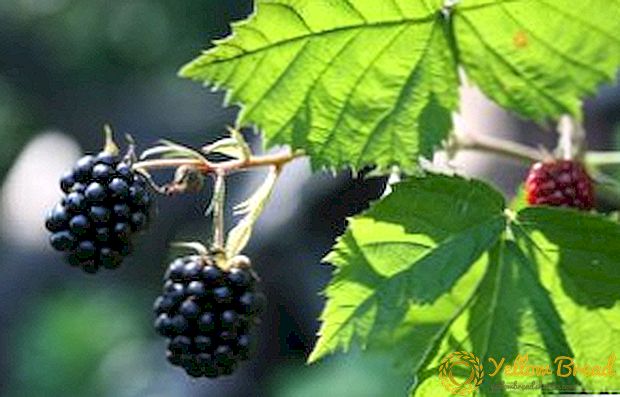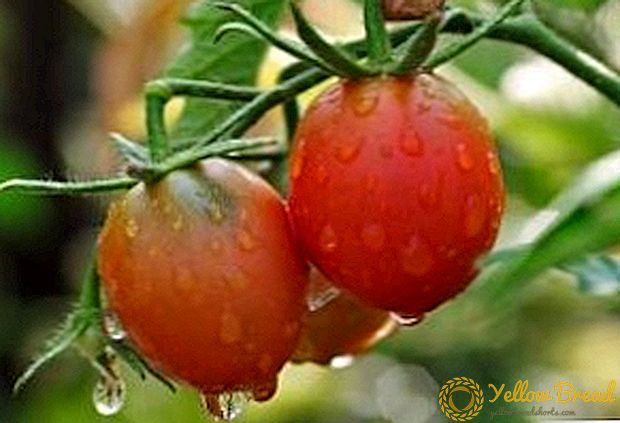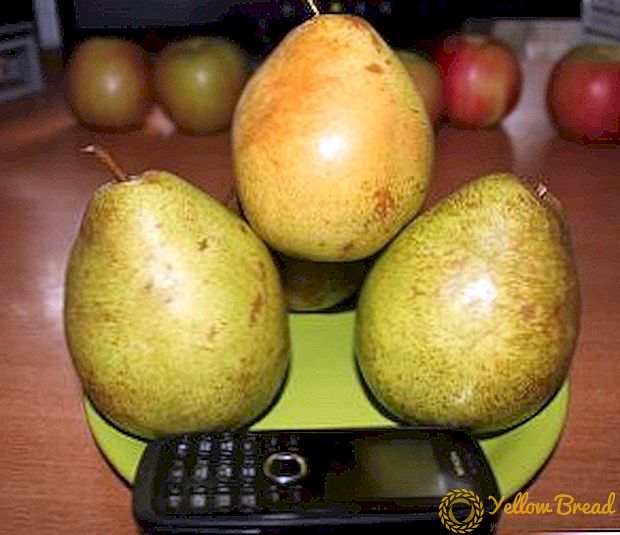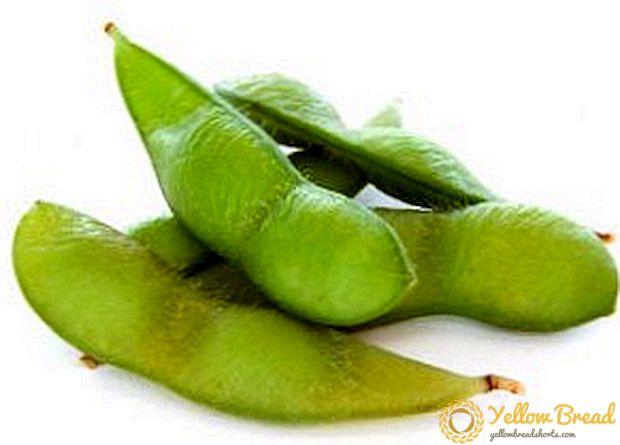 There are crops that are grown in the garden, not only for the harvest. These include beans.
There are crops that are grown in the garden, not only for the harvest. These include beans.
Being on your site, they make the soil looser, enrich it with nitrogen, and, of course, provide you with fruits with a whole range of nutrients and good nutritional value. In addition, the branched root system of the plant prevents the formation and development of different weeds.
In order to know how to grow beans in the country, you need to familiarize yourself with the basic requirements for growing and caring for this crop in the open field.
- Popular Bean Varieties
- Selecting a landing site: lighting and soil
- Good and bad predecessors
- Preparatory work before landing
- Soil preparation
- Seed preparation
- Bean planting
- Optimal timing
- Scheme and depth
- Agricultural cultivation of beans
- Watering, weeding and loosening
- Fertilization
- Hilling bushes
- Pest and disease control
- Harvest
Popular Bean Varieties
There are a number of varieties of beans for planting growing in many countries.
The most popular are the following:
- "Windsor". The variety has high yields, while fruits ripen in just 2-2.5 months.
- "Aushra". Fruits ripen longer - about 3-4 months.But the variety is extremely resistant to various pests.
- "Black giant". The plant is distinguished by the height of the bushes and the length of the pods (up to 15 cm).
- Velena. Unpretentious plant as to the composition of the soil and to care. Fruits - medium size, slightly curved shape.
- "Virovsky". The grade is steady, fruits possess good flavoring characteristics.
- "Black Russian". Non-capricious variety, the fruits of which can be consumed without peeling.

Selecting a landing site: lighting and soil
Beans love well lit sun areas. It is better to choose a place for disembarkation on a height, from where snow comes first in the spring.
To get a decent crop, the soil must be moderately loose, slightly alkaline or neutral, loamy. This culture requires potassium for good growth and development, therefore, with a lack of soil in this element, you will need to contribute it yourself.
Good and bad predecessors
The beans do not respond well to a surplus of nitrogen in the soil. Due to the fact that this culture has the ability to produce nitrogen independently, it is impossible to plant legumes on one bed for two or more seasons in a row. It is necessary to observe a certain crop rotation.  The bad The forerunners for them will be: lentils, peanuts, peas, soybeans. But good can be considered potatoes, cabbage, pumpkin, tomatoes and cucumbers.
The bad The forerunners for them will be: lentils, peanuts, peas, soybeans. But good can be considered potatoes, cabbage, pumpkin, tomatoes and cucumbers.
Preparatory work before landing
Before sowing beans in open ground, it is necessary to prepare the seeds and soil on the site.
Soil preparation
It is necessary to start preparing the plot for planting. in the autumn. It is necessary to dig up the earth and saturate it with mineral fertilizers. For 1 m² you will need 300 g of lime, 20 g of double superphosphate and 30 g of potassium chloride.
In the spring, it will be enough to loosen the soil before sowing and add 15 g of urea.
Seed preparation
Seeds for planting need to select particularly carefully. Damaged and non-standard use is not worth it. You should also know how to germinate beans for planting. 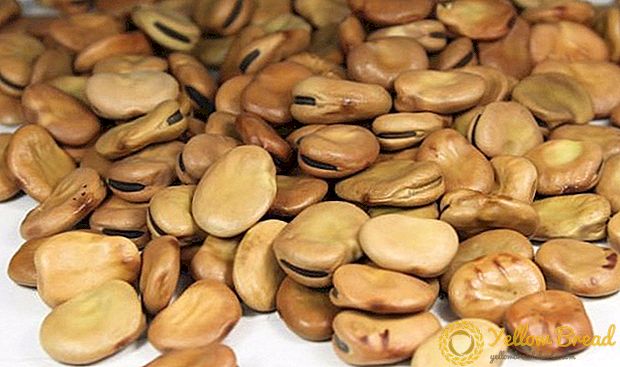 To do this, most often use two pieces of cloth moistened with water.On the first layer you need to evenly lay out the seeds, and cover the top with a second layer.
To do this, most often use two pieces of cloth moistened with water.On the first layer you need to evenly lay out the seeds, and cover the top with a second layer.
Bean planting
After finishing with the preparation of the soil and planting beans, you can begin their planting and care in the open field.
Optimal timing
To grow good beans, you need to know when to plant them. Begin planting can be in the spring, immediately after the snow melted from the site. That is, the timing of planting beans in open ground falls around the beginning of April. Interestingly, this culture is not afraid of possible frosts, the plant can easily withstand temperatures up to -4 ° C. However, the landing should be carried out in the ground, which warmed up at least to +5 ° C, not less. 
Scheme and depth
Sowing the beans produced in a moist soil, which after planting can be watered again.
Planting seeds on a flat plot and in the beds is somewhat different. In the first case, there should be a distance of about 40 cm between the seeds, and in the second case 20-25 cm will be enough.
Convenient to plant beans in 2 rows. Such an arrangement will bring more fruits, as well as facilitate the care of the culture. The distance between the rows is observed about 45 cm.
Agricultural cultivation of beans
Beans are different in that the agrotechnology of growing this culture is rather uncomplicated. The main requirements for care are timely cleaning between rows of weeds, maintaining the soil in a loose state, infrequent watering and fertilizing. 
Watering, weeding and loosening
Beans refer to drought tolerant crops. Therefore, watering them often is not necessary. Especially in the period before the plant bloomed.
It is necessary to focus on watering during flowering and fruit formation, since it is at these stages that the lack of moisture can reduce the level of yield.If there has been no rain for a long period of time, you can water the plant, but not more than twice a week, and you should use 10 liters of water per square meter.
Weeding and loosening the soil should be carried out as needed. Because of the ramification of the roots, weeds will be few, but those that exist should be regularly removed. When loosening a rake, you need to be extremely careful, because the roots of the plant are at a sufficiently small depth, and there is a danger of damaging or accidentally pulling the plant.
Fertilization
If in the autumn the soil was properly prepared, then in the future often to carry out dressing is not necessary.
In the period when the first shoots are visible, the culture can be fed with urea (1 tbsp. L.) And mullein (0.5 l.). Both components are combined with water, well stirred and watered the bed with the resulting mixture at the rate of 0.5 liters per bush.
Later, after weeding, you can once again fertilize the crop, using this time an infusion of weeds diluted with water. 
Hilling bushes
When the plant reaches a height of about 50 cm, you can no longer loosen it, but you should roll up. This will contribute to its sustainability.
When the formation of the fruit is foreseen, the plant is recommended to spud again, since this technique will help protect it from diseases.
Tall varieties still need to be tied up additionally to make it easier to care for them. To do this, after planting along the rows, stakes are driven into the ground, with a height of 1-1.5 m, which will later serve as a support for the plants. Sometimes, in addition to these supports, they pull wire or cords, observing an interval of 30 cm.
Pest and disease control
There are a number of pests that are a threat to the normal development of legumes. These include aphid. As soon as it will be seen on the tops of the shoots, they must be cut and destroyed. It is recommended that crops themselves be sprayed with a decoction of dandelion or 50% solution of Karbofos.
Another dangerous pest is the dark-brown butterfly shade - pea moth. It can lay eggs not only on the leaves of the plant, but also in the fruits themselves. As a result, yellow caterpillars live inside and eat seeds.To avoid this problem, you need to process the culture of "Phosphamide" and "Fentiuram".
As for diseases, such plants can show anthracnose. It is provoked by a fungus that infects the aerial parts of the crop during the entire growing season. Signs of anthracnose are red-brown spots on the leaves. If the disease is not treated, the foliage will dry.  To successfully combat this disease, you need to regularly treat the soil and the plants themselves with decoction of horsetail. It will take about 290-300 g of dry matter per 3 liters of water. The solution must be boiled for 10 minutes, then add more water, bringing the working mixture to a volume of 15 liters. If this broth spray plants 2-4 times in May-June, observing the interval of two weeks, then the disease can be avoided.
To successfully combat this disease, you need to regularly treat the soil and the plants themselves with decoction of horsetail. It will take about 290-300 g of dry matter per 3 liters of water. The solution must be boiled for 10 minutes, then add more water, bringing the working mixture to a volume of 15 liters. If this broth spray plants 2-4 times in May-June, observing the interval of two weeks, then the disease can be avoided.
Harvest
The process of harvesting depends on its intended purpose. Since the seeds ripen at the same time, they need to be harvested 3 or 4 times every week and a half.
Those fruits that are intended for consumption as a whole, are harvested at a time when the valves are juicy, and the seed size is no more than 1 cm.If the beans are planned to be consumed in immature form, then they should be collected at the stage of milky ripeness.
You need to manually break the fruits, trying not to damage the plant itself (start from the bottom and gradually move to the top).  When the growing season comes to an end, the plants are cut at the root and tied into sheaves. In this form, the immature seeds gradually reach. At the site of the culture sections in 2-3 weeks new shoots of beans can grow. In the south, one can harvest a second crop.
When the growing season comes to an end, the plants are cut at the root and tied into sheaves. In this form, the immature seeds gradually reach. At the site of the culture sections in 2-3 weeks new shoots of beans can grow. In the south, one can harvest a second crop.
The beans contain protein, all amino acids and many vitamins that are necessary for man. They also belong to a very valuable feed crop. Use them to enrich the soil with nitrogen, calcium and bioactive substances. Proper care and timely feeding the plant does not make you wait a long time for a generous harvest.

